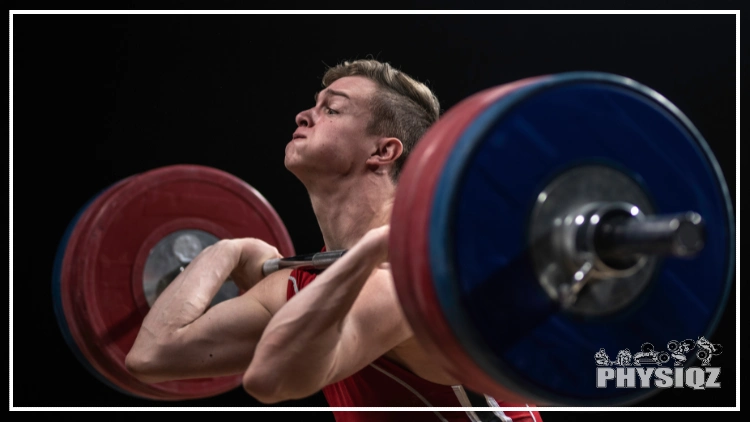
Hang cleans are an explosive exercise that’s commonly seen in CrossFit workouts, Olympic weight lifting competitions, and even commercial gyms since there’s countless benefits; one being the hang clean muscles worked cover both the upper and lower body.1
This versatile exercise begins with the barbell in the lifters hands (just above their knees) and ends in a front rack (front squat) position after it’s forced upwards from a bend and recoil in the hips and knees, caught on the “chest” and squatted back up. Or in other words, it’s essentially a full clean or squat clean, but from a hanging position rather than the floor.
All in all, the hang clean is a complex movement so knowing how to do it properly can help with injury prevention and increasing strength. It’s also crucial to understand the form trick that suggests a hang clean vs a power hang clean have entirely different uses and the rule of 3 trick where a rep range of 3 or less is generally preferred.
So if you’re considering adding hang cleans to your workout routine, continue below to read more on:
- Muscles worked in the hang clean
- How to hang clean with proper form
- Tips to perfect the hang clean
- The difference between hang cleans vs power hang clean vs cleans vs pulls vs jerks
- The form trick and rule of 3
- A list of clean variations and when to use each
- The benefits of the hang clean
- How to program hang cleans and a sample hang clean workout routine
How To Do Hang Clean & Master Hang Clean Form
The hang clean is a compound movement that is performed by grasping a barbell that is typically weighted when it is somewhere between the hips and knees around the mid thighs while in a standing position—the lifter then drives through the heels by employing the triple extension technique to assist to yank and pull the weight up to the height of the chest.
Triple extension is the synchronized opening of the three lower body joints which are the ankles, knees and hips; actions such as running or jumping utilize the triple extension. The hang clean essentially has 3 main phases, which are the beginning position, the high pull and the catch with each step discussed in depth below.2
Beginning Position
1. Pre tense the core, shoulders and hips by inhaling and exhaling.
2. Hinge at the hips and bend knees and hips to lower the torso to the barbell ensuring that the shins are close to the barbell.
3. Grip the bar using an overhand hook grip (overlapping the middle and index fingers over the thumb to improve grip) with a shoulder width and ensure that the feet are hip width apart and toes pointing outwards.
4. Lift up the weight and stand tall and then hinge at the hips making sure that the shins are vertical and shoulders above the barbell which is at the middle of thighs—this is the starting position of the hang clean.
5. The chest should be up and out with hips back, arms straight, shoulders retracted and ensure that bodyweight is distributed equally across the feet. Heels should be in full contact with the floor in preparation for the high pull phase.
High Pull
6. This is the explosive part of the movement where the lifter drives through the heels and extends both hips and legs in a rapid fashion.
7. The power created by the legs and hips and not the arms should bring the bar up in a vertical path and the bar should also be close to the body.
8. A shoulder shrug and subsequent jump is performed below the bar with the elbows in front of the lifter.
Catch
9. Once the bar is at its maximum height, the lifter should drop under the bar and pull the elbows through to catch the bar in a front rack position.
10. Elbows should be instantaneously rotated under the barbell until they are pointing ahead and the bar should now be resting on the shoulders.
11. Proceed to drive up until standing and this is the end of the movement.
Tips to Perfect Hang Clean Technique
There are a number of cues and tips a lifter can follow to help them master the hang clean, ensure they are doing the movement correctly and reduce the likelihood of injury which can easily happen in this multi movement exercise. These include:
- Keeping the barbell as close to the body as possible.
- Not using momentum or speeding to complete the movement.
- Back should always remain neutral and straight throughout the exercise.
- Always use the triple extension by driving through the feet, bending at the knees and shrugging the weight.
- Use appropriate weight; not too light nor too heavy.
- Ensure proper set-up; grip should be shoulder width and feet hip width, shoulders shouldn’t be round and the barbell should be close to the body.
By not following the tips aforementioned, lifters end faulting their hang cleans making for an inefficient and unsafe movement. These include leaning forward, over extension of the bar and not employing the triple extension.
Leaning forward—when the lifter fails to keep their back straight and neutral, they end up not focusing on the hang clean muscles worked placing them at danger of back injuries.
Overextending the barbell—lifters often make this mistake when pulling the bar and over extending their shoulders away from the torso. As a result, undue and additional stress is placed on the forearms and there is a shift away from the muscles that should be working; this increases risk for injury.
Failure to use the triple extension—often, lifters will have their arms as the focus and source of power for the movement which is the incorrect way. Power must come from the drive of the lower body.
Momentum and speeding—if lifters speed through the movement, they will be using momentum rather than engaging and activating the muscles meant to perform the exercise which makes the whole exercise inefficient and again sets up the lifter for injury.
Use of extremely light weight—while it may be tempting to use very light weight in an attempt to preserve form, having some weight is needed to have some form of resistance; in other words, there should be some effort in hauling the weight up to engage the necessary muscles.
Incorrect setup—using incorrect grip width, hip width, and shoulder and barbell positions including starting positions can lead to a bad hang clean.
Muscles Targeted With Hang Cleans (Hang Clean Muscles Worked)
The hang clean pull is a compound movement that targets both the upper and lower body muscles including the core muscles, quads, back muscles and the posterior chain (glutes, calves, hamstrings, spinal erector muscles and lats)—these muscles worked in hang clean give the body a complete workout by making use of the triple extension.
It also serves as a functional strength training routine that both strengthens muscles and enhances mobility with many bodybuilders using it as a gauge to measure power, strength and speed.3 When performed correctly, this movement can significantly aid a lifter in getting stronger and translate into improvements in other compound movements like deadlifts.
Hang Clean Muscles Worked (Primary)
The primary muscles worked include the quads which are the main movers, the posterior chain and lower back.
Glutes & Hamstrings—the glutes and hamstring are employed for the shift into the second pull and in the squat; that is during the bar’s initial lowering phase. They act as rubber bands by accumulating and building tension before the explosive thrusting of the hips to commence the lifting phase.
The gluteal muscles used in this movement include the gluteus medius, gluteus maximus and gluteus minimus.
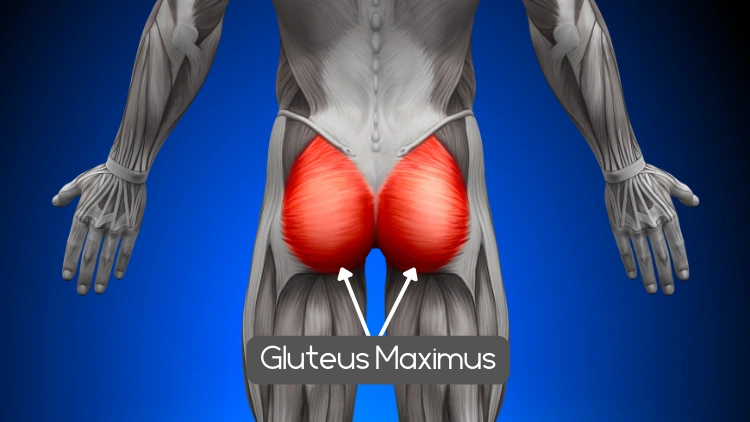
Source: decade3d via Canva.com4
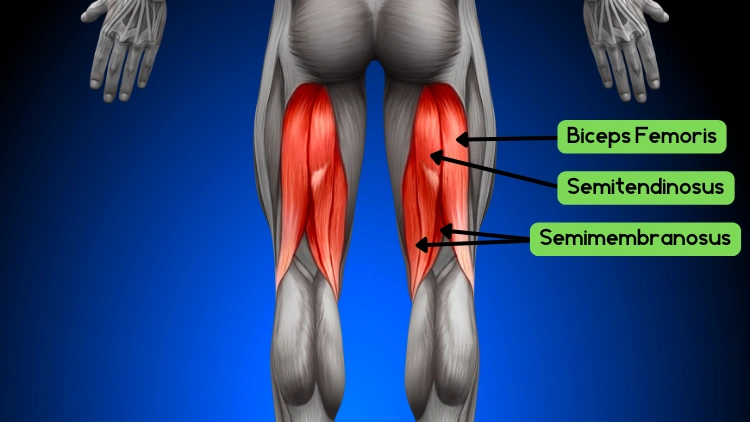
Source: decade3d via Canva.com5
Lower back—the lower back assists the other muscle groups during the hip thrust and subsequent squat. Lower back muscles used in this movement are the spinal erector, part of the lats, multifidus and spinalis.
The multifidus is an important stabilizer of the lower back spine in this movement and the spinalis is part of the erector spinae that also helps keep the spine stable and provides support.
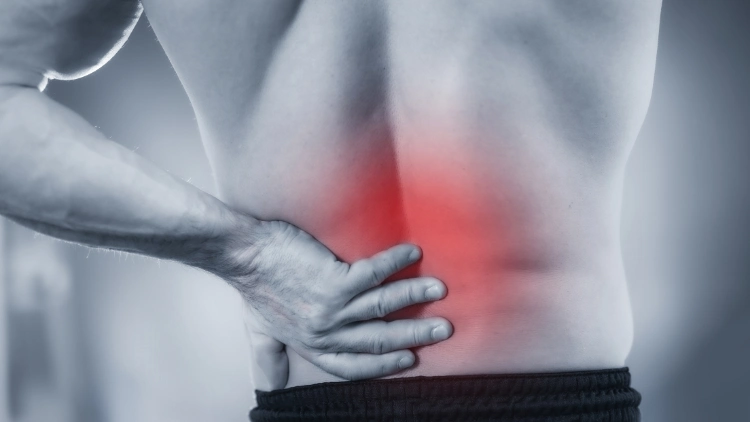
Source: microgen via Canva.com6
Adductors—the adductors help assist during the hip thrust and during the squat.
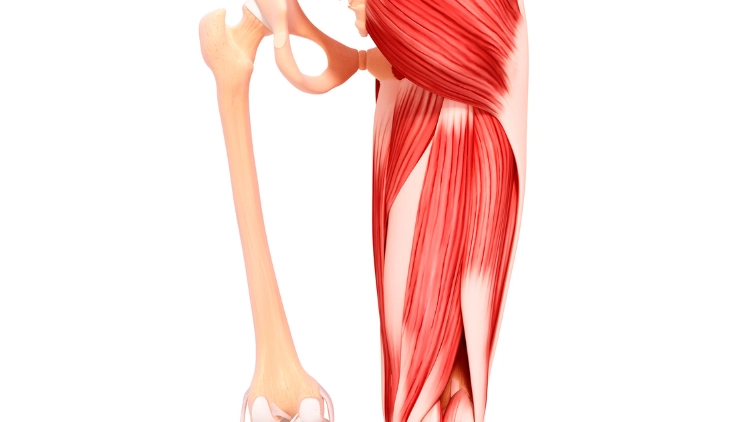
Source: Science Photo Library via Canva.com7
Quads— The quads are the primary movers in this exercise and are used extensively during the hip thrust, squat and the catch phase.
They are taxed when the feet are being driven into the ground while racking and are engaged isometrically (contraction of muscle when there is no movement) during the sit in the squat with the loaded weight in the front rack stance.
Regularly performing hang cleans can lead to carryover improvements in a lifter’s back squats. The quad muscles as implied in the name are a group of muscles composed of 4 muscles namely: vastus medialis, vastus lateralis, rectus femoris and the vastus intermedius.
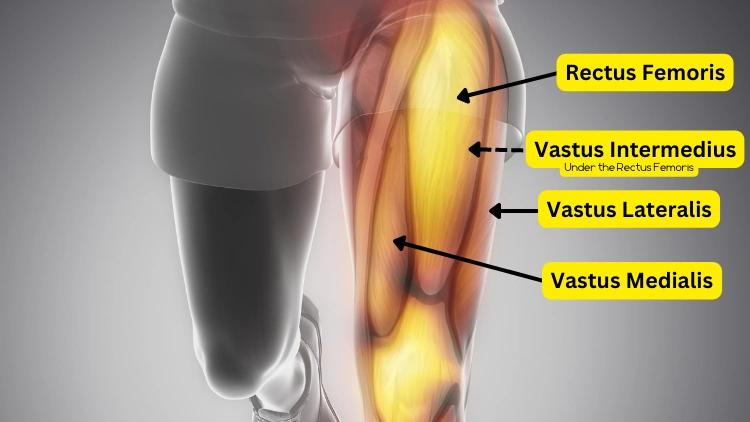
Source: janulla via Canva.com8
Hang Clean Muscles Worked (Auxiliary)
In addition to the primary muscles, these secondary and/or auxiliary muscles are among the hang clean muscles worked to assist the primary muscles complete the movement and they include the forearm flexors, shoulders (deltoids), and the traps.
Calves—these assist the quads during the squat and catch phase of the movement. The calf muscles are made up of two muscles, namely the soleus and gastrocnemius which come together to attach to the achilles tendon above the heel.
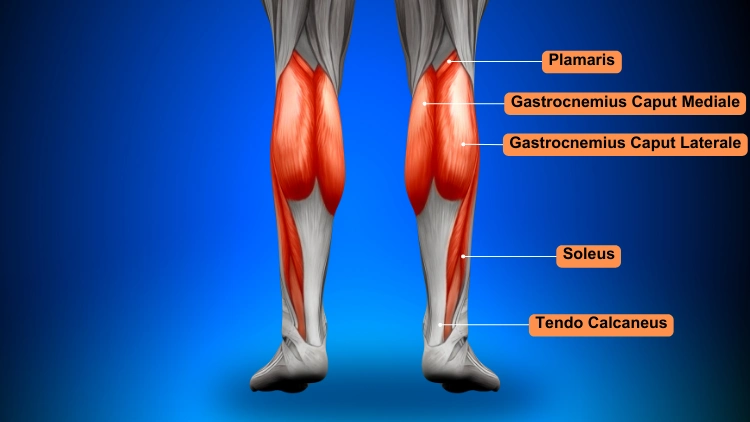
Source: decade3d via Canva.com9
Core muscles— The core muscles ensure that the body remains stable when lifting and supplying the energy when the barbell is being thrown resulting in the engagement of muscles such as the abdominals and pelvic floor muscles.
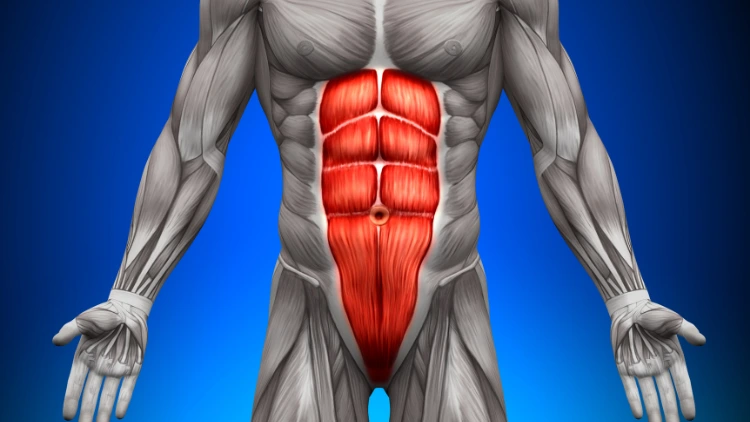
Source: decade3d via Canva.com10
Forearm flexors, biceps and triceps —the arms are very much engaged in this movement by holding and clutching the load which causes the arms muscles to all be activated.
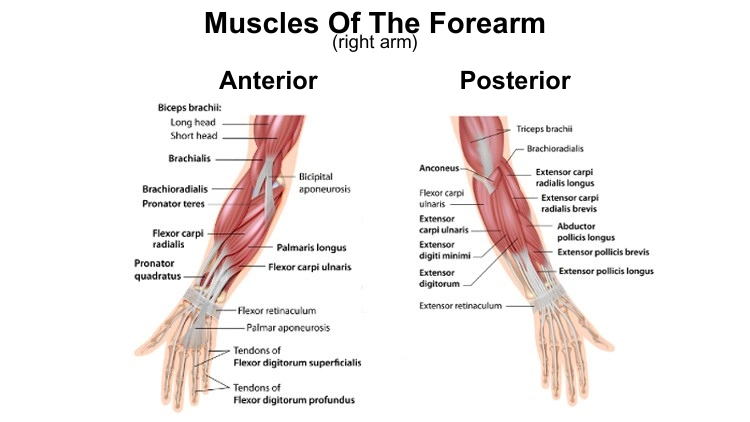
Source: Alila Medical Media on Shutterstock11
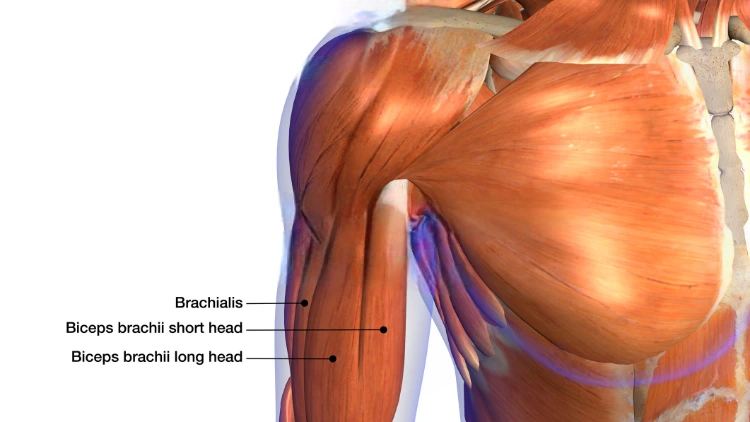
Source: Hank Grebe via Canva.com12
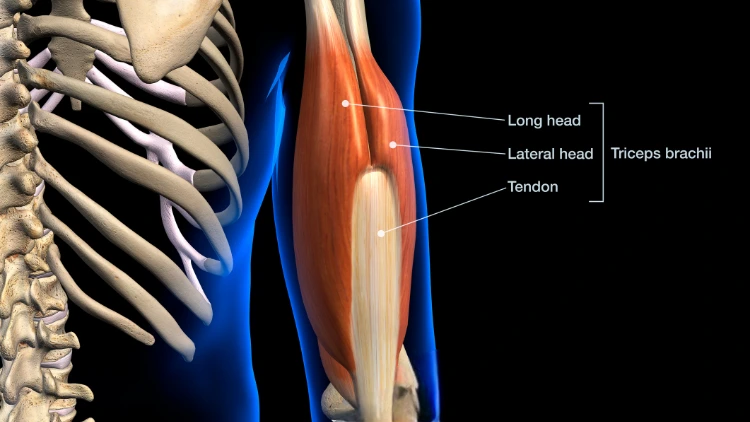
Source: Hank Grebe via Canva.com13
Spinal erectors—these muscles that line the spine help in extending the hips and also serve to stabilize the torso.
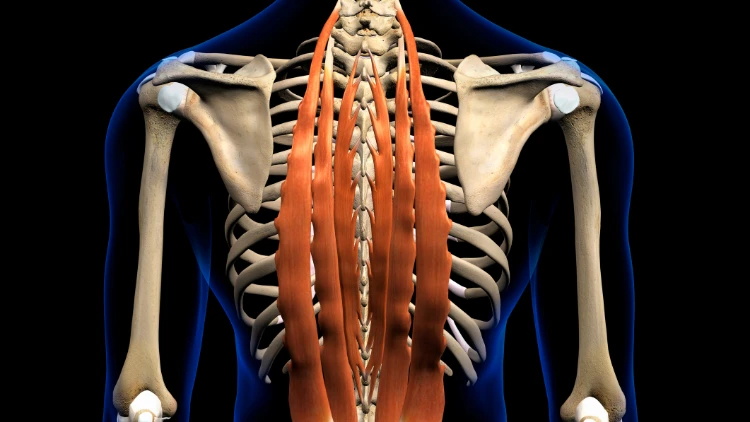
Source: Hank Grebe via Canva.com14
Trapezius—traps are used for the assertive shrug during the first and second pull of the hang clean when the barbell is caught beneath the chin.
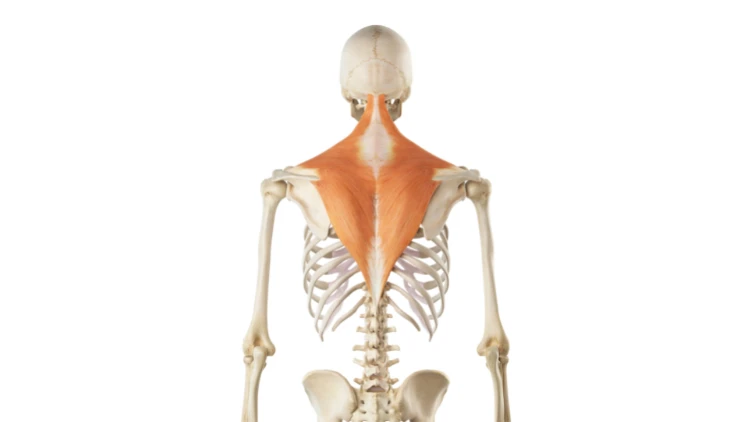
Source: Science Photo Library via Canva.com15
Upper back—the upper back muscles which consist of the traps, traps, rhomboids and levator scapulae (superficial muscles at the sides of the neck connecting to the upper back) help to ensure that the barbell stays close to the torso and helps support the bar after the catch.
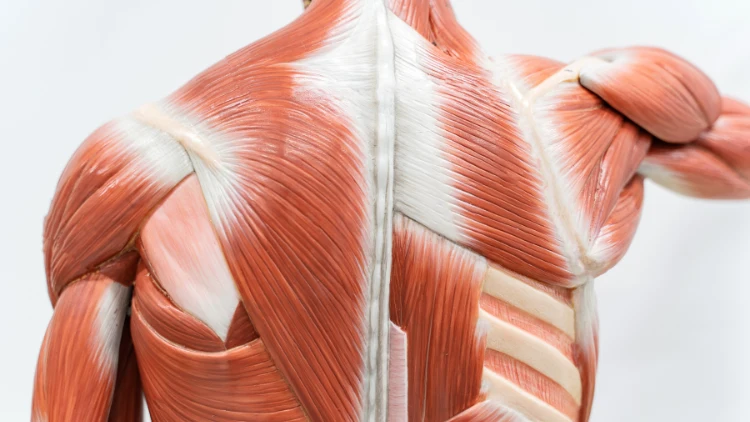
Source: tonaquatic via Canva.com16
Deltoids—the delts are recruited in the first pull of the hang clean and to help rotate the arm and distend it (increase its length). The deltoids are composed of three distinct muscles; the hang clean employs two of these which are the anterior and lateral delts.
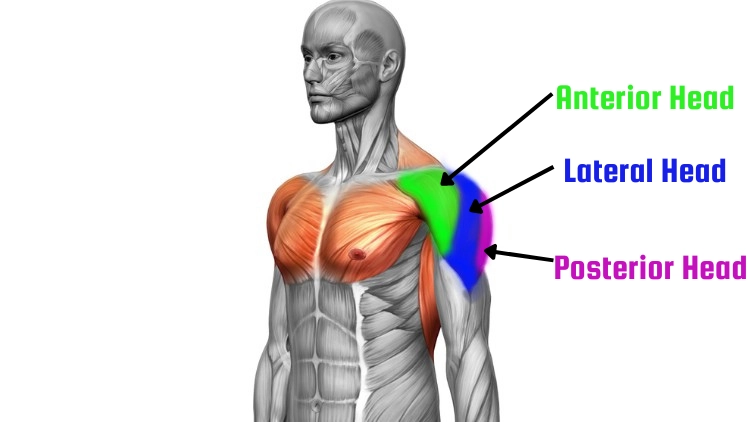
Source: Science Photo Library via Canva.com17
What’s the Difference Between Hang Clean vs Power Clean vs Jerk vs Clean & Pull?
While these compound movements work similar muscles that help lifters get stronger, faster and build more endurance— there are differences in how the movements are executed. To summarize this see the following descriptions:
- Clean = Also known as a full clean or squat clean, a clean begins with the bar on the floor, is thrusted upwards and caught in a front rack position before it’s squatted back up.
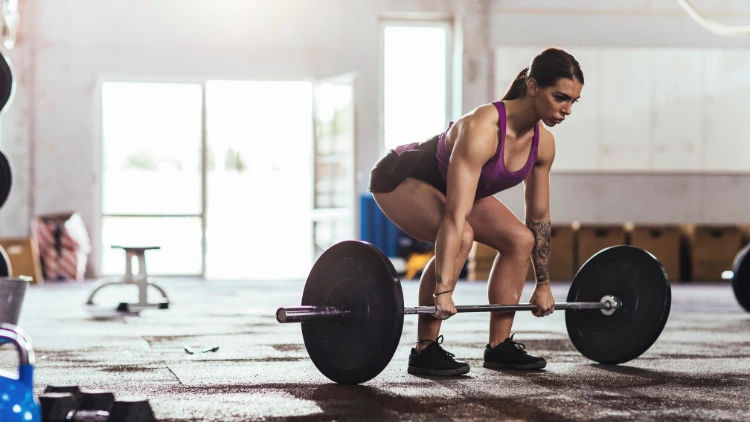
Source: mihailomilovanovic via Canva.com18
- Hang clean = A clean, but from a hanging position.
- Power clean = A clean off the floor, but caught in a partial squat or receiving position.
- Jerk = A jerk indicates the bar will be caught over the head and is most commonly seen in the clean and jerk, and the snatch.
- Pull = The pull is essentially when the barbell is being pulled off the ground and can be seen in cleans, power cleans, clean and jerk etc.
Below, you can find more detailed descriptions, videos, and images of each exercise, comparing hang clean, power clean, jerk, and clean and pull.
The Hang Clean
The hang clean starts from above the knees by the thighs but it may also slightly differ in regards to the hang position ranging from being high thigh, mid thighs or below the knee. The catch position in the hang clean is below parallel when the lifter is in a full squat position.
The Power Clean
Power clean is a variation of the the clean and differs from the hang clean in that it’s starting position is at the floor and has the lifter deadlift the load from the floor and then sink under the bar as opposed to doing a deep squat; lifters only lower themselves into a quarter squat position to catch the barbell.
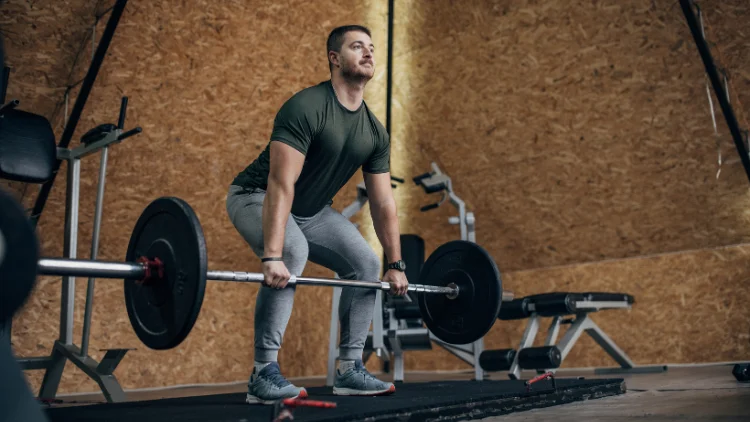
Source: Hirurg via Canva.com19
As a result of the increased range of motion, one of the benefits of power cleans is its ability to develop power by first doing a deadlift to pull the weight off the floor and then explosively and forcefully get the bar into the rack position.
The catch position of the lift must be above parallel to be considered a power clean and due to its momentum, the power clean is generally easier to perform than the hang clean. The muscles engaged in both a power clean vs deadlift are identical, making power cleans a beneficial addition to a deadlift workout.
The Clean
The clean is the first portion of the lift and it demands that the lifter explosively pull and lift the large weight high and clear the shoulders. The lifters after this, transitions into the frontal squat where they proceed to stand back up into a standing position and either move into the jerk or the weight is returned to the floor before initiating another rep.
The muscles worked in squat clean, which are also the muscles worked in barbell clean, are the posterior chain, quads, triceps, biceps, calves, traps, delts, core and lower back muscles.
The Jerk
Jerk is the last and final phase of the lift and commences from the front rack position. It involves the lifter dipping by bending at the knees while maintaining a vertical back.
They then proceed to extend the knees and explosively push the bar upwards off the shoulders then drop the bar by pushing vertically with the arms and splitting legs into a lunge, with one leg forward, the other back.
The Pull
The clean pull is used as a training for both the hang and power cleans by teaching the lifter to master propelling the bar upward with the use of force created by both the hips and legs.
Are the Muscles Working in Power Clean Different Than the Hang Clean Muscles Worked?
The power clean and hang clean work the same muscle groups but because of the difference in how the movements are performed, there is a variation in how the muscles are worked.
Hang cleans, in particular lower hang cleans are denoted by a lowering component of the load (eccentric) which will tend to activate the hamstrings and spinal erectors than the power clean. High hang cleans remove most of the 1st pull which results in more demand placed on the quads to produce force.
Power clean tends to recruit the legs, in particular the quads as being one of the power clean muscles worked more during the pull phase then the hang clean while the hang clean will activate the legs more during the squat part of the movement.
How Do Hang Clean Muscles Worked vs Clean & Jerk Compare?
The hang clean muscles worked and the clean and jerk muscles worked vary due to the phase of the movement. Both movements will incorporate the clean but there will be a difference in how the finish is executed. The press uses upper body strength and the jerk is explosive, recruiting and generating its power from the leg muscles.
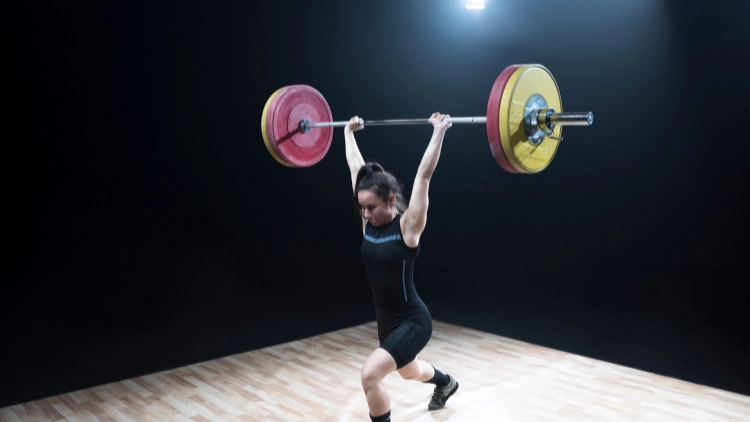
Source: simonkr via Canva.com20
In the press, less weight can be lifted and pressed up because the lifter relies solely on the shoulders, triceps, and the upper back; however, the jerk will use the power of the legs to drive the bar up to the shoulders, the arms serve only to catch the bar once it descends to the arm’s length.
This makes the jack a display of total full body strength and the press suits growing muscle and improving pressing power since it tends to isolate the delts, upper back and triceps.
Benefits of Hang Cleans
Hang cleans offer a myriad of benefits to the lifters including burning calories, full body exercise and can help individuals perform daily activities better.
Burns Calories
The hang clean is an excellent exercise that burns calories thus promoting health and aiding in weight loss. It increases the basal metabolic rate which is the resting metabolism as a result of the increased muscle mass—muscle typically requires more calories to maintain which further helps maintain healthy body weight.21
Full Body Workout
The hang clean is a compound movement rather than an isolation movement which means that it works out multiple muscle groups targeting both the upper and lower body. Very few workouts can make the claim of working and engaging all major muscle groups in the body from the calves up to the shoulders.
Increases Explosive Power
The athleticism of lifters who regularly perform hang cleans vastly increases by enhancing their explosive power. The significant power generated directly influences an athlete’s performance, speed, endurance, and strength, especially in sports requiring immense power output, making hang cleans an optimal inclusion in a powerlifting program for athletes.
When matched with similar powerlifting exercises, it recruits more muscle fibers and improves other athletic sports such as jumping, sprinting and enhances the ability to quickly change directions.22
Carries Over to Other Weightlifting Exercises
For beginners, the hang clean provides an excellent introduction to clean exercises, particularly since mastering the entire clean can be challenging. This makes hang cleans a valuable inclusion in beginner powerlifting programs. Also, the hang clean can help lifters be more adept at driving the bar to the front rack position.
Often, powerlifters use the hang clean, power clean and other variations to prepare and train their muscles for competition.
Functional Movement
This movement is very functional and can carry into other daily activities since it engages the adductors and lower back which are critical to helping the body carry out activities such as bending, lifting and even balancing. It also improves mobility thus easing daily activities.
Supplementary Exercise
Incorporating hang cleans into a training regimen, like an 8-week powerlifting program, serves as an excellent accessory exercise to enhance other weightlifting movements, even if heavy weights cannot be used. If they are good enough for powerlifting elites, then they should be incorporated on every lifter’s regimen.
Hang Clean Variations & Their Uses
The hang clean has a number of variations due to the way they are executed and as a result can serve to strengthen certain weak points in the movement which will carry over to other weightlifting exercises; these include no foot hang clean, hang power clean and hang clean complex.
No foot hang clean—this movement is similar to the hang clean but the exception is that the lifter does not slide the feet after extending and when positioning themselves into the squat. In addition, the stance is slightly wider in the beginning of the movement compared to the hang clean.
Hang power clean—the hang power clean is also almost the same as the hang clean, but what makes it different is that the lifter does not squat to catch the bar and this variation improves the hip drive (hip extension critical to making a squat possible).
Hang clean complex—hang clean complex is an integration of the different clean components such as the clean pulls, jerks and front squats which are all added. This allows the lifter to not only increase volume, but address any weaknesses and strength limitations that they may have.
Hang clean high pull—this type of hang clean forgoes the turning over the barbell in the squat position for the catch. Consequently, it puts less strain on the shoulders and wrists, making it a viable option for individuals with shoulder and wrist injuries who still want to train. Using wrist wraps can also provide additional support to the wrists in such cases.
Pulling derivatives such as hang clean high pull that omit the catch phase have been shown to increase vertical jumping capabilities in comparison to catching derivatives such as hang power clean.23
How To Program Hang Cleans Into Your Workout Routine With the Rule of 3 Trick
In many cases, most people turn the hang clean into either a power clean and / or squat clean thus defeating the purpose of the hang clean because of a high rep count.
In addition, the form trick and rule of 3 is essentially maintaining a minimum of 1 rep to a maximum of 3 reps for every set of hang clean in order to focus on neural adaptations, strength and explosiveness.
It is imperative that the lifter obtains the most out of this movement, and staying within this rep range will ensure that good form is being maintained due to the explosiveness of the exercise which will tire the individual rapidly causing form to be compromised.
Rather than going for quantity in performing say 4-10 reps on a set, quality reps will yield better results and better engagement of both the primary and auxiliary muscles—it is very easy for other muscles that should not be involved in certain phases of the movement to take over defeating the objective of hang cleans.
Hang Clean Workout Routine
Hang cleans yield many benefits and can help athletes and lifters develop raw power, speed and strength; they are much easier to perform than full cleans which are harder to master making them ideal for beginners.
In addition, the hang clean can train athletes to master the last pull in the clean and address bending the elbows too early. Hang clean workout routines can be used to enhance athleticism, getting ripped or building muscle.
Athletes can dip their toes into training with the simple sample routine below, which can also serve as a supplement to a hypertrophy mass routine, enhancing overall athleticism. The lifter will need to identify what their 1 rep max (RM) is—essentially the maximum weight they can complete the movement for 1 repetition.
Lifts on this routine are done at a percentage of their 1RM.
- Maximum Strength: 3 sets of 2 reps at 90-95% of 1RM (1 Rep Max) with a recovery time of 2-5 minutes
- Increased Strength-Speed: 5 sets of 3 reps at 70-85% of 1RM (1 Rep Max) with a recovery time of 2-2 minutes
- Increased Speed-Strength: 5 sets of 3 reps at 50-65% of 1RM (1 Rep Max) with a recovery time of 1-2 minutes
The hang clean is a must have exercise for any serious fitness enthusiasts and athletes looking to build powerful hips and the hang clean muscles worked can carry over to not only improving sports performance, but also other exercises such as deadlifts, squats and into everyday activities.
Frequently Asked Questions
How Is the Power Clean Form Different Than Hang Clean Form?
Power cleans are a variation of clean where the catch happens above a parallel squat and hang cleans are a variation of the clean that are executed with the bar commencing in a hanging state in front of the body.
Do Hang Cleans Promote Strength?
Hang cleans are ideal at promoting strength because they are explosive and demand and add strength in the major muscle groups while increasing muscle mass and endurance.
What Are Hang Cleans Good For?
Hang cleans target muscles of both the lower and upper body recruiting the glutes, hamstrings, calves, quads, biceps, forearms, back and core muscles.
Do Hang Cleans Work the Upper or Lower Body More?
Hang cleans work the upper and body in sequence, they thus target muscles of both the upper and lower body. However, the muscles of the lower body provide the majority of the power and due to completing a full squat, will help build leg strength.
Can You Do Hang Cleans With Dumbbells? Is There Any Carry Over?
Hang cleans can absolutely be performed with dumbbells but with less intensity as their Olympic counterparts and still provide similar benefits as the barbells and the dumbbell clean muscles worked are similar to those as the barbell counterpart. A db power clean using dumbbells also mimics the Olympic barbell power clean.
They are a great way to condition the body for the barbell hang clean. Hang cleans may also be performed using a kettlebell with kettlebell clean muscles worked being the quads, hamstrings, core, glutes and lower back muscles.
References
1vm. “Young man performing deadlift.” Canva. Accessed 15 April 2023. <https://www.canva.com/photos/MAEFBaS1a8A-young-man-performing-deadlift/>
2University, B. (2023). Hang Clean. Retrieved 2023, from <https://www.baylor.edu/content/services/document.php/86946.pdf>
3JL Ayers, M. D. (2016, May 10). Hang cleans and hang snatches produce similar improvements in female collegiate athletes. Retrieved 2022, from <https://www.ncbi.nlm.nih.gov/pmc/articles/PMC4993140/>
4decade3d. “Gluteus Maximus – Anatomy Muscles.” Canva. Accessed 12 April 2023. <https://www.canva.com/photos/MADerAJvWMU-gluteus-maximus-anatomy-muscles/>
5decade3d. “Hamstrings – Anatomy Muscles.” Canva. Accessed 15 April 2023. <https://www.canva.com/photos/MADerMxdfBI-hamstrings-anatomy-muscles/>
6microgen. “Lower Back Pain.” Canva. Accessed 15 April 2023. <https://www.canva.com/photos/MADm1DXjhew-lower-back-pain/>
7Science Photo Library. “”Human musculature.” Canva. Accessed 12 April 2023. <https://www.canva.com/photos/MADmTB-2Tfo--human-musculature/>
8janulla. Canva. Accessed 20 April 2023. <https://www.canva.com/photos/MADE-Sq7uLk-quadriceps-female-anatomy/>
9decade3d. “Calves – Anatomy Muscles.” Canva. Accessed 14 April 2023. <https://www.canva.com/photos/MAC_U2yFahk-calves-anatomy-muscles/>
10decade3d. “Abs – Anatomy Muscles.” Canva. Accessed 12 April 2023. <https://www.canva.com/photos/MADerFwn3js-abs-anatomy-muscles/>
11Alila Medical Media. “Muscles Forearm Anterior Posterior View Stock Illustration 147943889.” Shutterstock. Accessed 20 April 2023. <https://www.shutterstock.com/image-illustration/muscles-forearm-anterior-posterior-view-147943889>
12Hank Grebe. “Labeled Anatomy Chart of Neck and Shoulder Muscles on White Background.” Canva. Accessed 15 April 2023. <https://www.canva.com/photos/MADZASGJL7w-labeled-anatomy-chart-of-neck-and-shoulder-muscles-on-white-background/>
13Hank Grebe. “Labeled Anatomy Chart of Shoulder, Elbow and Triceps Muscles in Skeleton on Black Background.” Canva. Accessed 14 April 2023. <https://www.canva.com/photos/MAEJnzTxmJU-labeled-anatomy-chart-of-shoulder-elbow-and-triceps-muscles-in-skeleton-on-black-background/>
14Hank Grebe. “Male Erector Spinae Back Muscles in Isolation on Skeleton.” Canva. Accessed 12 April 2023. <https://www.canva.com/photos/MAD8-XkZ3xQ-male-erector-spinae-back-muscles-in-isolation-on-skeleton/>
15Science Photo Library. “”Human trapezius muscles.” Canva. Accessed 13 April 2023. <https://www.canva.com/photos/MADmTLHptgU--human-trapezius-muscles/>
16tonaquatic. “Muscles of the Back model for physiology education.” Canva. Accessed 15 April 2023. <https://www.canva.com/photos/MADKZXi5XqU-muscles-of-the-back-model-for-physiology-education-/>
17Science Photo Library. “The muscles involved in standing biceps curl. The stabilizing muscles are highlighted.” Canva. Accessed 12 April 2023. <https://www.canva.com/photos/MADmTGwAFbo-the-muscles-involved-in-standing-biceps-curl-the-stabilizing-muscles-are-highlighted-/>
18mihailomilovanovic. “Weightlifting.” Canva. Accessed 15 April 2023. <https://www.canva.com/photos/MAEI0yHN5mw-weightlifting/>
19Hirurg. “Weightlifting practice.” Canva. Accessed 15 April 2023. <https://www.canva.com/photos/MAFbr6qRuqY-weightlifting-practice/>
20simonkr. “Female weightlifter performing clean and jerk lift.” Canva. Accessed 15 April 2023. <https://www.canva.com/photos/MAEI_5O0CgM-female-weightlifter-performing-clean-and-jerk-lift/>
21J T Lemmer, F. M. (2001, April). Effect of strength training on resting metabolic rate and physical activity: age and gender comparisons. Retrieved 2023, from <https://pubmed.ncbi.nlm.nih.gov/11283427/>
22Naruhiro Hori, R. U. (2008, March). Does performance of hang power clean differentiate performance of jumping, sprinting, and changing of direction? Retrieved 2023, from <https://pubmed.ncbi.nlm.nih.gov/18550955/>
23Timothy J Suchomel, S. M. (2020, May). The Effect of Training with Weightlifting Catching or Pulling Derivatives on Squat Jump and Countermovement Jump Force-Time Adaptations. Retrieved 2023, from <https://pubmed.ncbi.nlm.nih.gov/33467244/>